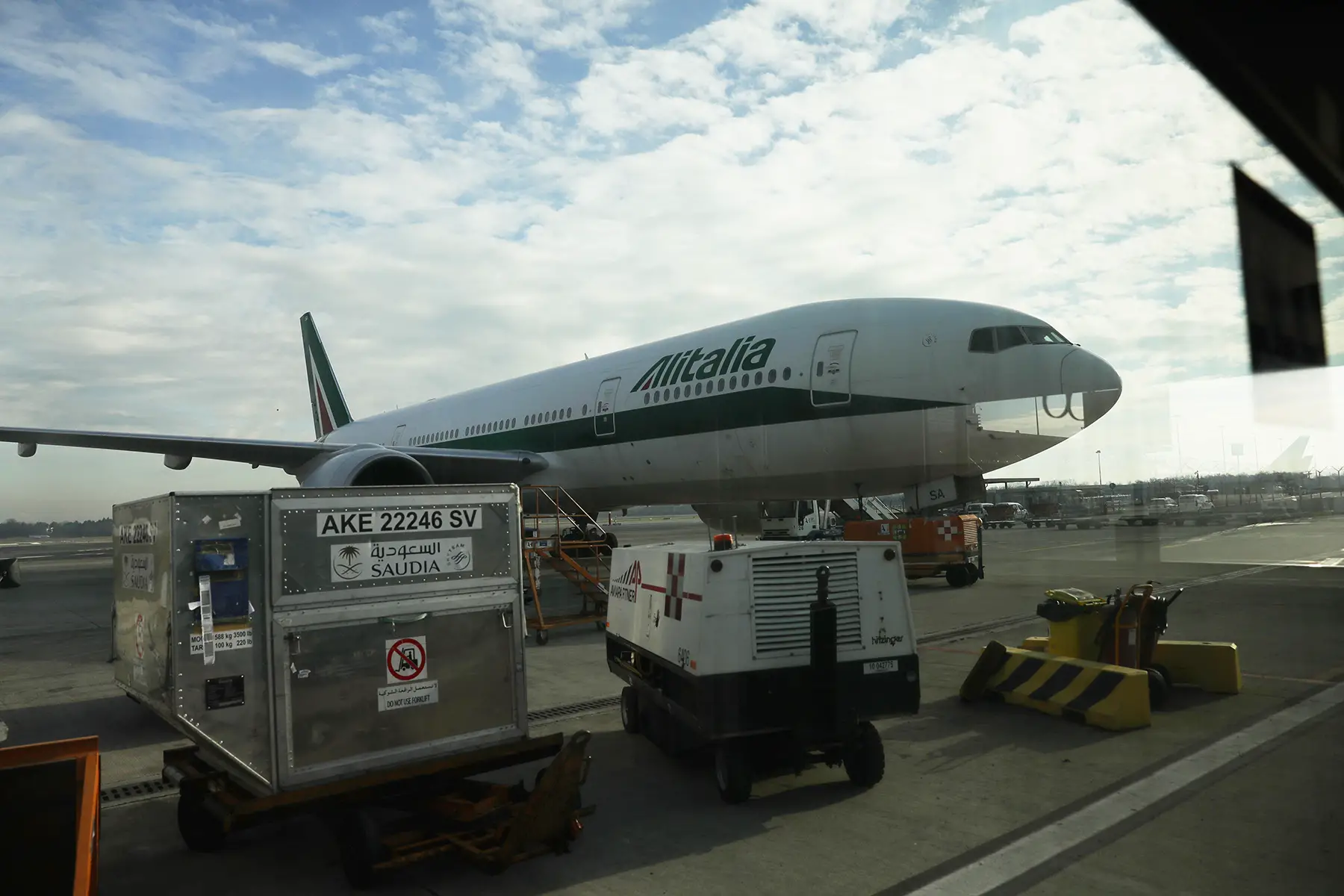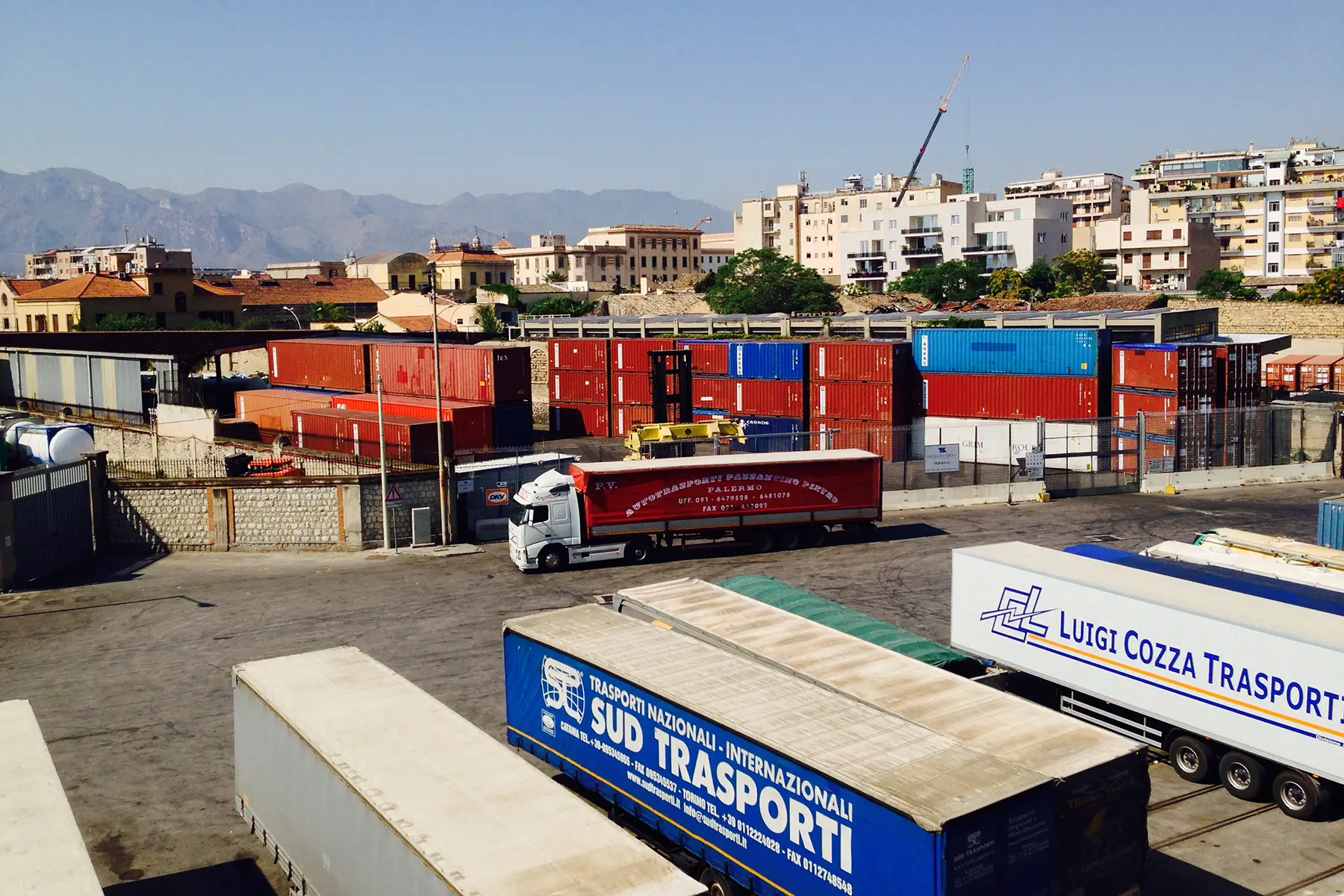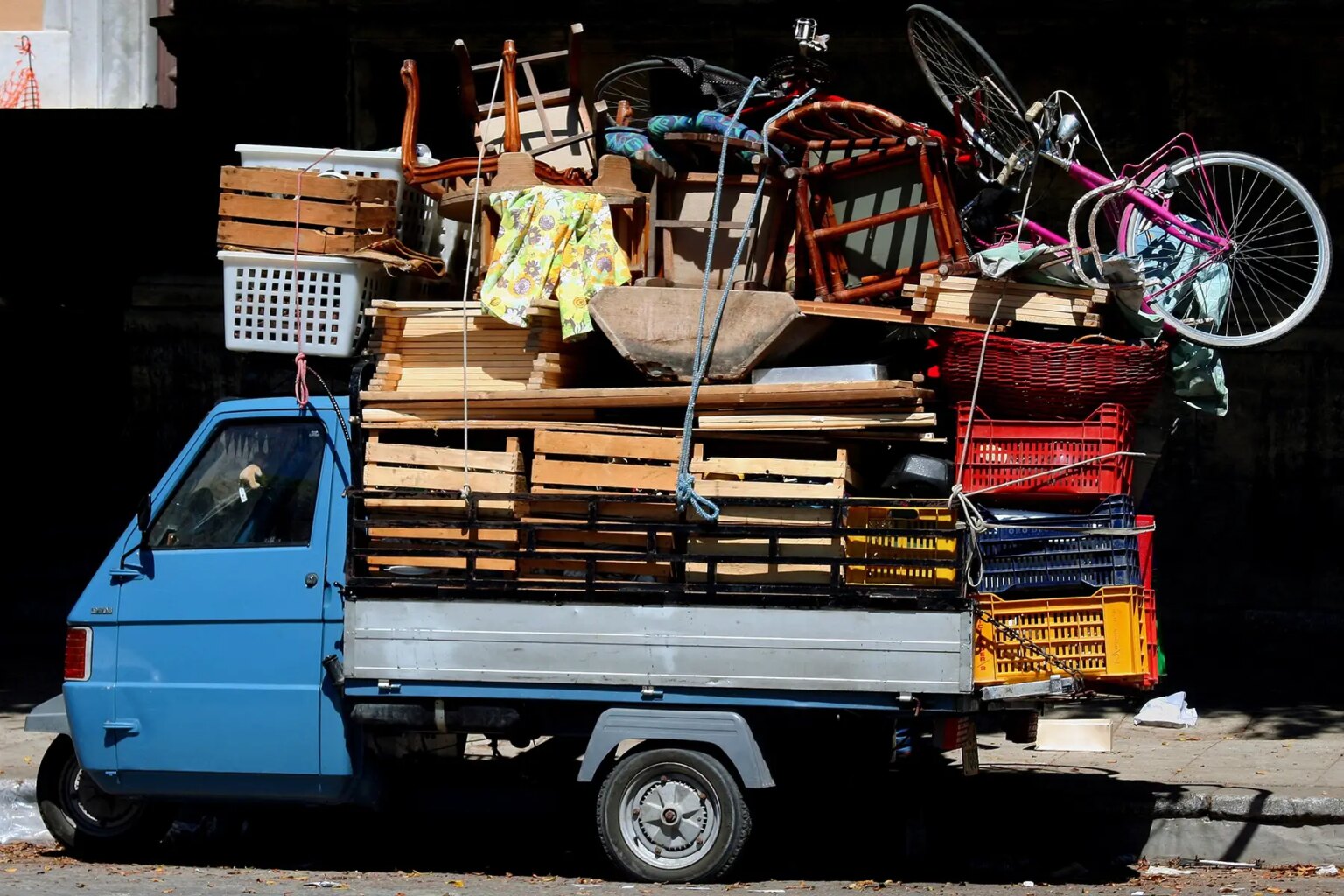Relocating yourself and your family to another country can be a logistical challenge. There are many factors to consider, including what to take, how to ship it, and your timeline. Fortunately, with proper support, removals to Italy can be relatively stress-free. And once you’ve settled in, you’ll be able to start on everything that needs doing in your first week, learning the language, and of course, enjoying amazing Italian cuisine.
Read on for information on:
The Relocator
Planning a new life in Italy? Give yourself some peace of mind with The Relocator. On their easy-to-use platform, you'll be able to compare your options quickly, getting quotes from some of the biggest names in global relocations. Move abroad confidently with The Relocator.
Relocating to Italy from abroad
Moving your entire life to Italy requires some planning. That’s why it’s important to assess your needs. For example, if you’re moving to Italy to study, you’ll probably need fewer items than if you intend to live in your new Italian city indefinitely.

The relocation method you choose will depend largely on what you’re bringing, whether that’s a few personal items or larger possessions like furniture or a car. Fortunately, there are plenty of methods and companies that can facilitate your transportation needs.
Removals to Italy with air freight
Italy is a very popular destination for visitors and expats alike. As such, you’ll find nine major international airports dotted throughout the country, with the busiest airports in Rome (Roma), Milan (Milano), and Venice (Venezia).
While there are no definite numbers on how many people are relocating to Italy, in 2022, Italy’s foreign population stood at just over 5 million people.
Who should use air freight?
Transporting your goods by air is a fast and reliable option. However, it is also costly – the World Bank estimates that air freight is generally 12 to 16 times more expensive than ocean freight. So, if the price is your primary consideration, you may want to pursue other methods.

However, if you are sending a small shipment or transporting perishable or essential items like food, plants, or medicines, it may be wiser to pursue air freight. If environmental impact matters to you, air freight isn’t the best choice. It generally emits 20 to 30 times more carbon than ocean freight.
How air freight works
When you are ready to begin the process, your first step will be finding an air freight company. Make sure you research fees, timelines, and what kinds of support they provide. Once you settle on a company, they will walk you through the required paperwork and explain any customs, duty, and other information related to your belongings.
The easiest way to ship with air freight is to hire a full-service moving company, as they will handle the packing, customs, paperwork, shipping, and unpacking. However, if you prefer to do it yourself, you can do this through a shipping service or airline. Make sure you do your research on the company’s website or by contacting them directly to find out timings, costs, and what you may and may not ship. You’ll also need to provide the weight, size, and approximate value of your belongings. If you’re sending something particularly valuable, it’s a good idea to get insurance to cover it for damage or loss.
Air freight timings
As soon as you know that you are moving to Italy, you should ideally begin researching freight companies six to eight months before departure. This will allow you to find the best-fit company and to get on their schedule without worrying about delays or backlogs.
Although air freight is one of the faster freight methods, it can take anywhere from a few days to several weeks before your items arrive, so be sure to speak with your company about reasonable expectations for delivery. Finally, check whether you can pick up your items as soon as they arrive in Italy or whether you have to wait.
Air freight costs
The cost of air freight will vary based on the weight of the items, the origin and destination, and how quickly you want your shipment to arrive. Prices also fluctuate due to disruptions or delays, so be sure to ask about your specific situation. Generally, though, costs could start between US$3–7 per kilogram (March 2023). Fortunately, many air freight companies can help you with quick or deferred delivery where necessary. Discuss it with them to find the best option for you.
Packing options
When packing up your belongings, your freight company will provide information about the boxes and dimensions you’ll be allotted. Make sure you use sturdy boxes that can be stacked and protect your items from any moisture damage if they are delicate.

Follow your freight company’s labelling instructions, and be sure to ask if they have any discounts on boxes or suggestions for eco-friendly packaging. If you’re using a full-service moving company, they will pack for you.
Finding an air freight company
Finding the right air freight company is very important. They will be able to advise on your best options for air freight in terms of cost and delivery dates. Many companies also offer a carbon-offset, so be sure to ask if you want to make your move more environmentally friendly. Additionally, thoroughly research your options and compare costs. The following air freight cost comparison tools can help you:
Removals to Italy with sea freight
Transporting goods by sea means placing items in a shipping container – a full cargo ship usually carries around 18,000 shipping containers. The space available is one reason sea freight is much more affordable than air freight. For those looking to relocate to Italy, it’s a great choice because Italy has a whopping 57 ports. Of course, not all are huge, but some of the busiest include Genoa, Trieste, and Venice. With this many options, sea freight is certainly a possibility worth considering.
Who should use sea freight?
Sea freight is a great option if you are moving bulk items. For example, it’s a great idea if you are moving your entire household’s furniture or a vehicle. This is because the combined weight doesn’t matter as much as it would on an airplane.
Finally, if environmentalism is important, sea freight releases a lot less carbon into the environment than air freight.
How cargo works
The process for sea freight will depend on the company you choose. Generally, you can use a whole shipping container or share one. If you go with the former, you usually pay a flat rate and fill it up completely – if you go with the latter, your charges may be based on size or weight.

Once you decide on your shipping company, they will provide you the necessary paperwork and information, as well as explain what customs fees and other taxes will apply to your situation. Additionally, be sure to ask them about your delivery options in Italy. As with other shipping methods, if you work with an international removals company, they will handle most of the process for you.
Sea freight timings
Because sea freight deliveries take longer than air freight, you should budget extra time. This way, you can ship off your non-essential belongings several weeks before departure, and you won’t have to wait too long in-country to receive them.
It’s best to begin researching freight companies six to eight months before your move. Transit time will depend on the company and whether you paid a premium for faster delivery. Generally, arrival can take between three to eight weeks. Discuss with your freight company how soon you can pick up your belongings in-country once they arrive.
Maritime freight costs
If you want your shipment to arrive as soon as possible, you can expect to pay a premium. If you are moving items across several continents, you are likely to pay more. Additionally, some companies are more expensive than others. However, generally speaking, sea freight rates hover around US$2–4 per kilogram (March 2023). Check with individual companies about payment methods.
Packing options
With sea freight, it’s even more important to pack your belongings securely. This is because the ocean can be treacherous, and items may move or bump against each other. So, use plenty of bubble wrap and sturdy boxes. Additionally, if you have delicate items, it’s a good idea to discuss this with your freight company, as they can advise on keeping them safe.
Finding a freight company
When researching a freight company, it’s important to have already decided on what you want to ship and when you want it to arrive. That way, you’ll be able to find the perfect company to suit your needs. While conducting your research, use a cost comparison tool to find the best price within your budget. These include:
Removals to Italy by road or rail freight
If you are considering removals to Italy from another European country, it might make sense to transport your belongings by road or rail freight. One of the most straightforward options is to use a comparison tool like Shiply to find a driver and a van. You can also rent a vehicle and drive your items yourself. Costs and timelines vary depending on the country of origin, company, and the size of van you need.

If you are considering rail freight, your best bet might be to contact a relocation company to assist with the logistics, as trying to manage the packing, transport, and delivery on your own may be confusing. However, it’s a great option if you aim to move sustainably, as Italy’s state freight rail company, Mercitalia, is a member of Rail Freight Forward. This coalition focuses on reducing the negative impact of freight on the planet.
International relocation companies
If you want to outsource the entire moving process to a company, you can certainly do that. Relocation companies can take care of the entire process – from packing your items to unpacking them at your home in Italy. They’ll also handle anything in between, such as the freight method and customs requirements. A good removal company will tell you which documents you need and be able to give you a clear timeline. While sea freight or air freight will simply deliver your belongings, a removal company is much more hands-on.
Many companies also provide 24/7 customer service and GPS tracking of your shipment while in transit. If you are interested in contracting a moving company, be sure to book one several months before your move. Moving company fees will vary by company, service, distance, and home size. Prices could range from €1,800 to €9,500 and, for some, the level of support is well worth the cost.
How to find an international relocation company
When looking for an international relocation company, list your must-haves. These include budget, deadlines, and levels of support. Do you want to be able to speak to someone at any time about your case? Do you need a more hands-off process with occasional check-ins? Once you have your list of requirements, you can narrow down your options. Fortunately, there are plenty of company comparison tools, including:
DIY versus using a relocation company
Using a moving company saves you time and effort, but it comes at a cost. If you organize the move yourself, you’ll save some money and have more control over your shipping options.
That said, hiring a relocation company can save you a lot of anxiety. For example, you know your belongings are safe, as the company will pack them professionally and have an insurance policy. In addition, they will handle all of the customs requirements, which can be tricky if you’re moving from outside the EU, especially if you don’t speak Italian.
Whichever option you choose, it’s a good idea to start planning at least six months before your move.
Relocating vehicles and pets
Bringing pets to Italy
If you’re planning to bring your furry family member to Italy, there are several requirements to consider. These may include a microchip, medical records, certain vaccinations, and a limit to how many animals you may bring in.

Requirements for bringing pets to Italy will also vary based on the country you are traveling from, so be sure to begin researching well before your departure. In fact, give yourself at least four months to complete the pet relocation paperwork with the relevant Italian authorities.
Importing a car to Italy
If you want to drive in Italy, and don’t want to buy a new car, you can try importing your own. The process depends on several factors. Those importing a vehicle from within the EU will face fewer requirements than those bringing one from outside it.
If you do this, you must register the car in Italy and get Italian license plates. Importing one from outside of the EU will, however, generally mean paying 22% VAT and an 11% import duty tax. Keep in mind that certain cars and people (such as Italian citizens) may qualify for exemptions from these fees.
Customs and importing goods into Italy
When relocating to Italy, you should consider customs. As Italy is a part of the EU, it generally follows its customs regulations. Within Italy, the relevant agency is the Agenzia delle dogane dei Monopoli (ADM), or the Customs and Monopoly Agency.
Generally, if you bring items from within the EU, you won’t need to pay VAT or import duties. For goods from outside of the EU, you usually will need to. Like most countries, Italy also has limitations on the amount of certain things, like currency and medicines, that you can bring into the country. Meanwhile, other items, like certain drugs, are simply not allowed in the country. So, be sure to do your research before traveling.
Useful resources
- 8 Billion Trees – Comparing the carbon footprint of sea and air freight
- Agenzia delle dogane dei Monopoli – Customs and Monopoly Agency
- Freight Finders – Air freight cost comparison tool
- Sea Rates – Sea freight cost comparison tool






